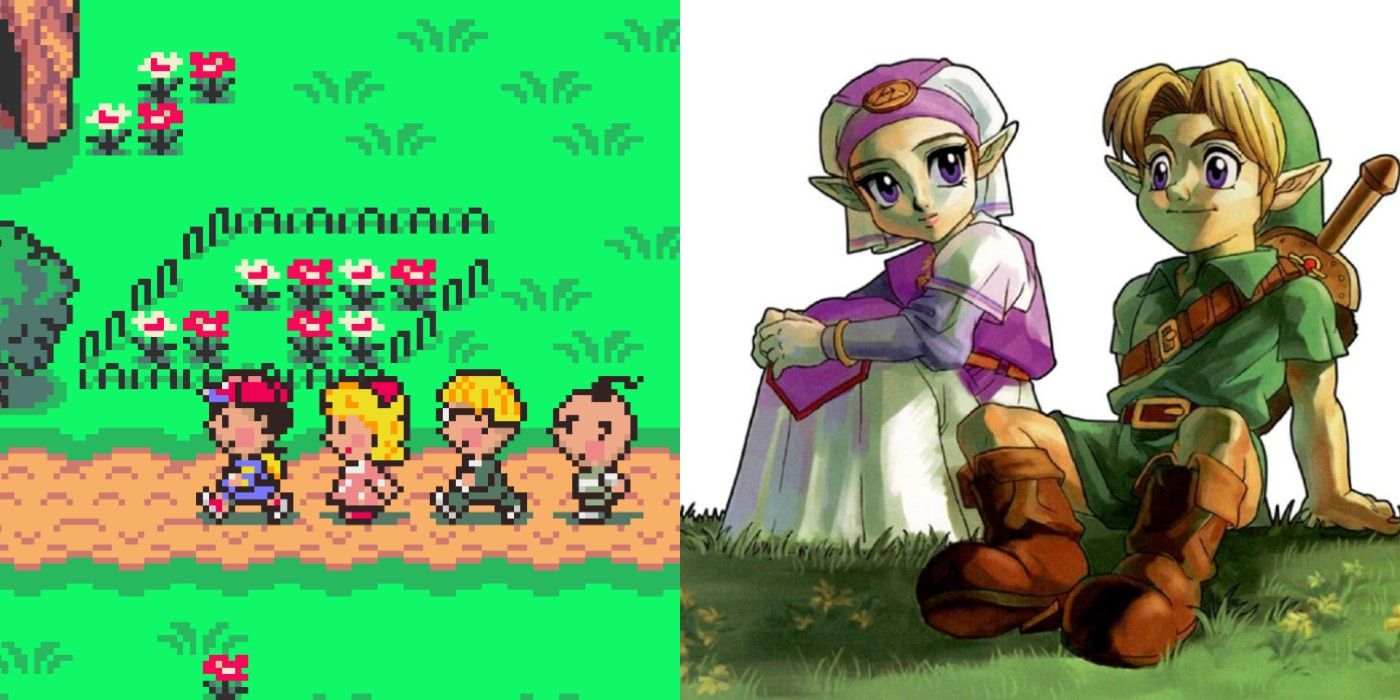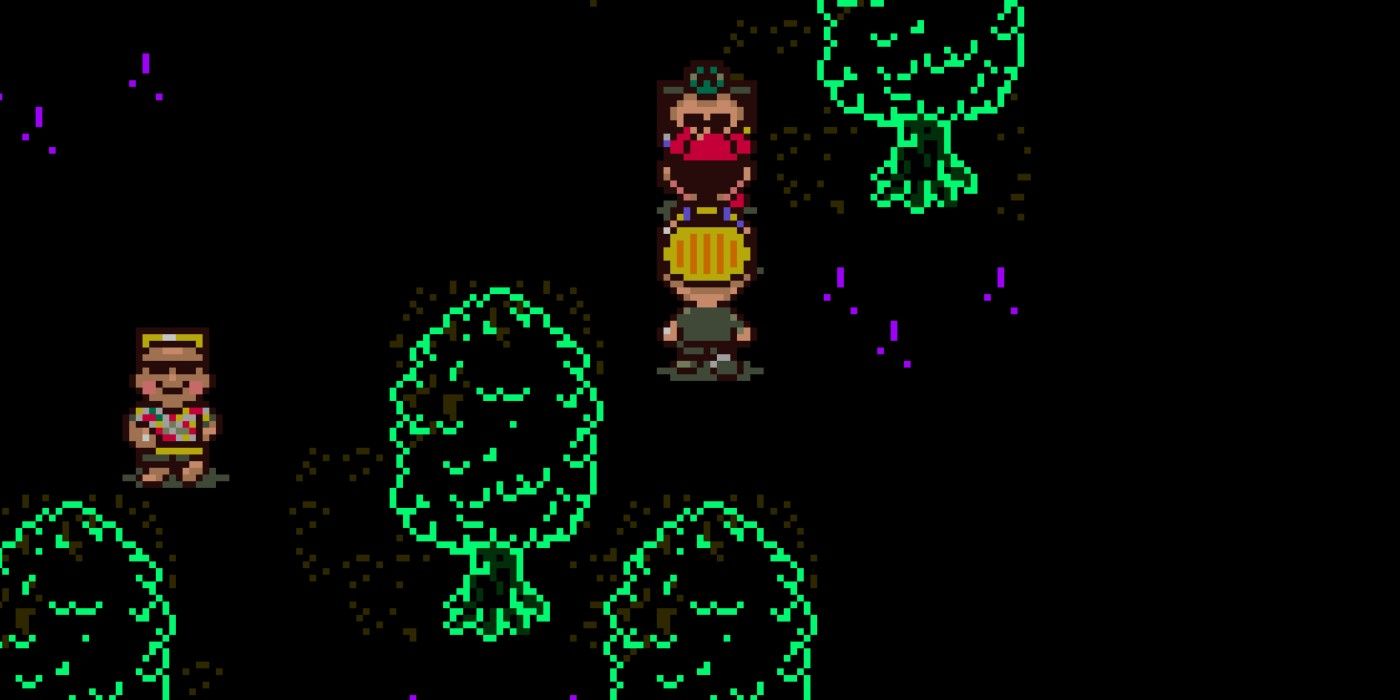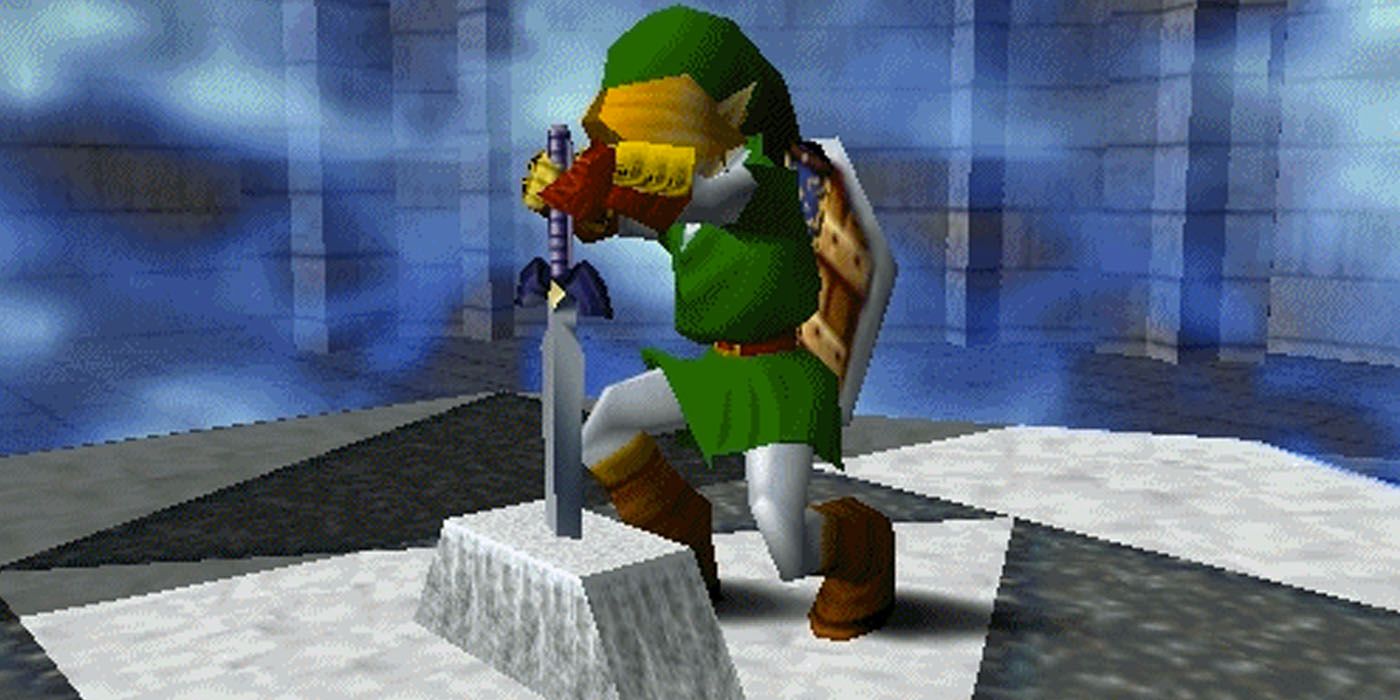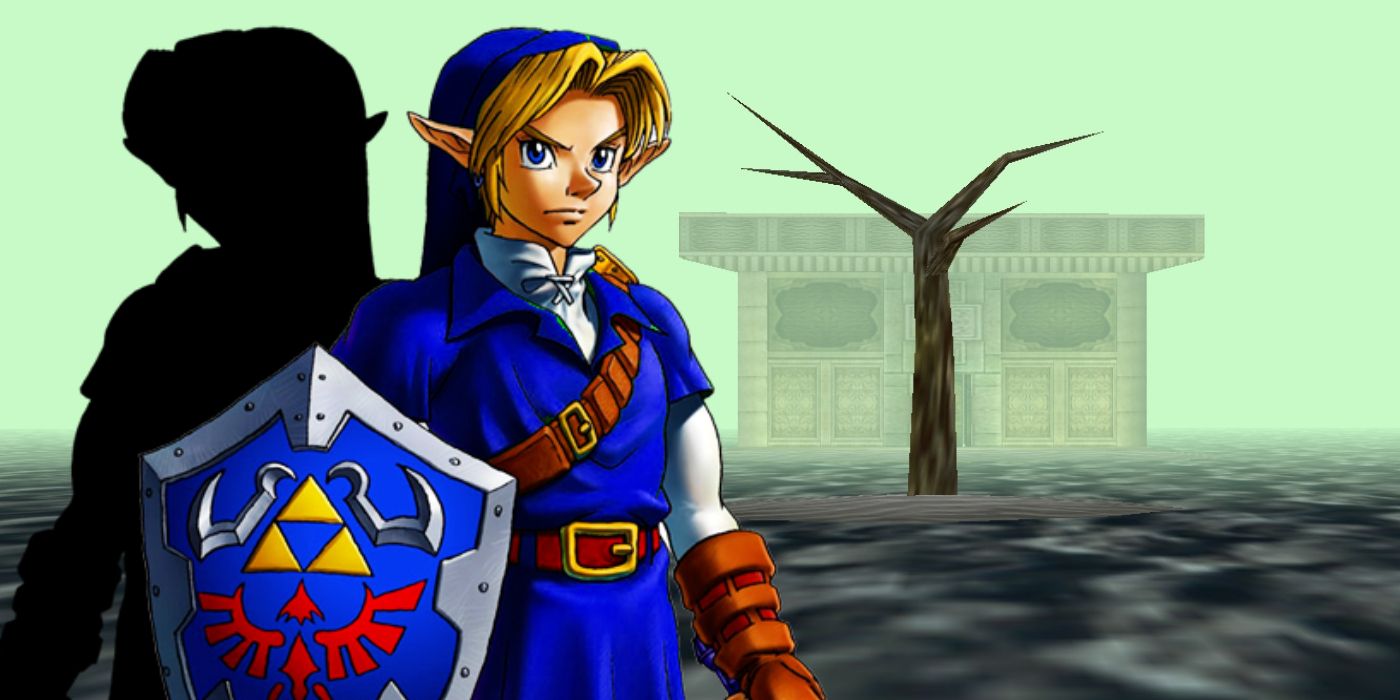Earthbound's lackluster sales can mostly be attributed to its poor marketing and unique emphasis on allegorical storytelling over gameplay, which was alien to the gaming industry back in the 90s. However, Nintendo released The Legend of Zelda: Ocarina of Time only a few years later, which saw significantly more success. Ocarina of Time boasted a vast world filled with mystery for gamers to explore, but its revolutionary level design overshadowed the elements that made it so similar to its aforementioned cult classic JRPG cousin. Ocarina of Time is just as complex and deep an allegory as Earthbound is, and they both happen to tell gamers a strikingly similar message.
Earthbound and Ocarina of Time both have very similar skeletal structures upon which the flesh of their metaphors stand. In Earthbound, Ness is informed by a time-traveling bee that he is the chosen hero destined to defeat the evil alien Giygas who threatens to dominate the Earth. Similarly, Link is awoken by Navi and the Great Deku Tree who send him on a quest to stop Ganondorf from stealing the Triforce and bringing Hyrule to ruin. Both titles star a young boy who is summoned by destiny itself to leave home and tackle an overwhelmingly intimidating obstacle represented by both Ganondorf and Giygas.
These stories, while ultimately satisfying, are rather predictable in nature. Players know within the first ten minutes of these games that both heroes, Ness and Link, will end up conquering their nemeses and save their respective worlds from certain doom. However, the complexity of both stories is buried within the subtext of their narratives. Both plots ultimately offer their audiences a raw look at the process of maturing into a world far darker than youthful minds can process. The transition from childhood to adulthood is an awkward and sometimes traumatic experience that both titles explore with slightly varying perspectives.
Earthbound and Ocarina of Time's Subtext Explained
Ocarina of Time begins in the Kokiri Forest, which is itself a metaphor for childhood. All its residents are permanently children who live in a playground-like forest filled with color and imagination, and Link is forced to leave it all behind when he takes on his destiny and sets out to defeat Ganondorf. After obtaining the Master Sword, he enters a magically-induced coma until he is an adult, and Link finds himself in a new reality with a stark contrast to the Hyrule he once knew.
As a child, most areas in the game are playful and whimsical in nature. Once Link grows up, he sees that Zora's Domain is now frozen over, Castle Town is annihilated and infested with animated corpses, and Kokiri Forest is now a warzone of monsters. Link's transition into adulthood is symbolically represented through his literal increase in age as well as the juxtaposition between Young Link's Hyrule and Adult Link's Hyrule. He immerses himself in the darkness of adult life symbolized by the mass suffering Hyrule has endured during his seven-year absence.
On the other hand, Earthbound takes a more direct and less fantastical route to illustrate the process of growing up. Ness lives in a satirical adaptation of America known as Eagleland, and as such, he's a stereotypical 90s kid. After his quest begins, Ness finds that countless individuals have been possessed by the influence of Giygas and they each attack him and his friends. Giygas himself is a manifestation of evil or corruption rather than a physical being. Because of this, when Ness encounters maniacal cultists, short-tempered police officers, delusional hippies, prostitutes with burglarizing tendencies, and frugal businessmen throughout the span of his adventure, they're all under the control of the abstract concept of evil personified as Giygas.
Other social issues too large for youthful minds to comprehend are illustrated through surreal imagery. For example, both the acid trip backgrounds found in battles and the entirety of Moonside represent the horrors of substance abuse. Ness' adventure in Earthbound is ultimately an insightful trip through America's corruption and is symbolic of his simultaneous inward journey, in which he realizes the world isn't the colorful paradise he once believed it to be.
Earthbound and Ocarina of Time both tell a coming-of-age story using their subtext as their primary vehicle for delivery, but their overall perspective is slightly different. Earthbound's story has a more positive outlook on the transition to adulthood than Ocarina of Time does because it places extreme emphasis on friendship and companionship. Ness defeats Giygas not with strength or an ultimate weapon, but rather with the support of his loved ones. Ness and his friends pray for the assistance of all their comrades they've made throughout their journey, and their powers combined devastates Giygas.
While it is comparable to Earthbound that he defeats Ganon with the help of Princess Zelda and the other sages, Link's story ends in a far bleaker tone than Ness'. Zelda returns Link to the past to relive his lost childhood, but it ultimately results in his own misery. Hyrule is blissfully unaware of his heroic actions, and Navi abandons him without a word.
In the events of Majora's Mask and Twilight Princess, players learn that the Hero of Time was deeply troubled by the aftermath of his debut adventure and he never came to terms with all that occurred during those experiences. Earthbound and Ocarina of Time both tell coming of age stories by utilizing well-crafted symbolism, but Zelda's version of the tale comes across as unnerving compared to the heartwarming message found in the former.




